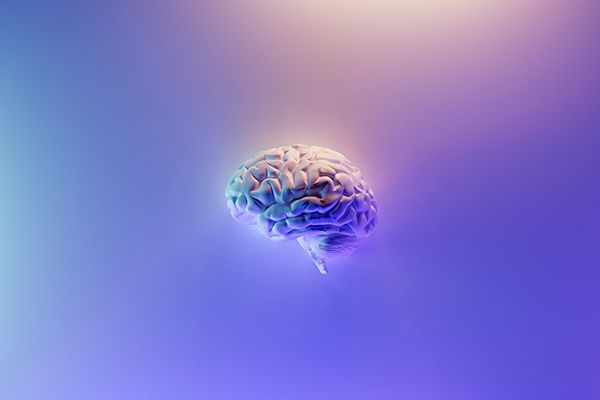Welcome back to the Healing Pain Podcast with Dr. Annette Willgens
Professor Annette Willgens is going to be sharing some amazing information about mindfulness. I want to share her bio with you before we begin. She is a Clinical Associate Professor at the Doctor of Physical Therapy Program at Temple University. She has over 30 years of experience in both clinical practice as well as educating students and professionals.
Her scholarly agenda, which is what makes me excited, includes studying mindfulness and how it relates to resilience and stress management. Why I love her work so much is because she’s working from the inside. She’s working inside an active DPT program to educate future DPTs, future physical therapists, and oftentimes other health professionals that she works with on an interprofessional basis in the university setting.
Mindfulness is important for lots of different physical as well as mental health conditions. It is not being taught so much in PT school. We’re excited to share this information with you. I’m personally excited to share her with you. I love her and her work. She’s going to have lots of great tools, techniques and tips that you’ll learn from her. With that, I’m going to turn it over and we’ll begin our show.
—
Watch the episode here:
Listen to the podcast here
Masterclass: Mindful Stress Management For The Healthcare Professional With Dr. Annette Willgens
Thanks, everybody, for being here and thanks, Joe, likewise. I want to open a little bit with my own personal journey as a student myself. I always tell my students that I don’t necessarily know any more than you. I’m on the same journey. I’ve just practiced a little bit longer. People ask me how I came across this work. I’m a pediatric physical therapist and I’m in academia. It’s an interesting story because I had taken a position as a brand-new faculty member.
I was assistant faculty and I was the Director of Clinical Education. I thought, “How hard can this be?” I get to play with students and connect them from classroom to clinic and be that bridge or link. I get to watch them grow. It wasn’t like that at all. My office became this revolving door of students with anxiety, depression, eating disorders, parents divorcing, and essentially students experiencing pain and stress.
At the same time, I had noticed a few students each year, a cohort of 60, 70, 100 students, several would fail a clinical course. These were bright and wonderful students. I thought, “What is going on?” It was a stressor for me, for the rest of the faculty, for the clinical setting, and it was significant for the student. My dissertation topic at the time when I was completing my doctoral work is I did a study on failure in clinical education. That was my first publication.

I learned that students, generally speaking, fall into two very large bins. One is the bin of the student that has this trait of emotionality, worry, rumination, anxiety, difficulty with confidence, and maladaptive perfectionism. That student would unravel because they never got enough feedback, which wasn’t true. They just had this abyss of needing to be constantly validated in the clinic.
The other type of student that struggled was baseline mindlessness. The student had practiced very well by shoving down any emotion and discomfort, essentially hitting the delete button on emotion, any feelings, worries, thoughts, so that when a situation arose, they would continue to delete and push away rather than address, be present and engage. The remediation for these students became developing a program in mindfulness. I got trained at the University of California Medical School in Mindfulness Teacher Training. That’s a little bit about my journey.
The Axis Of The Body
One of the most important things that I teach students and other faculty members across the university are about the three axes of the body. These three axes have an effect on health, wellness and mortality. We have these three conversations going. One, between the brain and the gut or the digestive system. Another conversation with our inflammatory biomarkers or cortisol, and then another conversation with the amygdala, the fight, flight, fear center of the brain. The first stress axis, we call that the hypothalamic-pituitary-adrenal axis. That is broken into two parts.
We have the part that is this normal neuroadaptive or neurobiological response. It prepares and provides for fear-based reactions. If there’s a bear in the room, run. There is also this maladaptive response that’s developed, and that’s called the allostatic load. It is a response in which cortisol dumps into every cell of our body. It is balanced through the right prefrontal cortex, and that’s the unhappiness center. I call that caveman or cavewoman brain, sitting on the side of the road, scanning for threats, and waiting for something bad to happen. This is this ongoing low threshold, damaging stress reactivity.
The second axis is the gut-brain and this is rather new. It’s hot in the literature now. It consists of bidirectional communication between the enteric nervous system or the GI system, the endocrine system, the immune system, and the autonomic nervous system, linking the emotional and cognitive centers of the brain. The gut has over 70% of the body’s microbes. It has the surface area of a tennis court and it requires balance.
The microbial metabolites such as lactobacillus, bifidobacterium, and the other bacilli produce Gamma-Aminobutyric Acid or GABA. This is the main inhibitory neurotransmitter in the brain. The other is serotonin. Serotonin is the happiness hormone. It prevents depression, and that’s also produced by cells in the gut. The last element of the gut-brain axis is the vagus nerve or the great wandering nerve. It’s the cranial nerve that connects the gut to the heart, lungs and brain. It controls the hypothalamus and limbic systems. Research is indicating that this dysbiotic gut leads to anxiety, depression, even indicators for Parkinson’s disease, autism, and many other chronic conditions.

The third axis of the body was written as part of the study by Ahmed Tawakol out of UMas and his colleagues in the Lancet 2017. This was a study that coined a term I use as the neural-arterial hematopoietic axis. What Tawakol and colleagues found was proof of the mind-body connection. They had about 300 patients without cardiovascular disease or any active cancers. They studied them longitudinally for years. They looked at amygdalar activity, bone marrow activity, and arterial inflammation including C-reactive protein and markers of perceived stress.
Based on illumination on a functional MRI scan of the amygdala, perceived stress, they could robustly and consistently predict an increase in hematopoiesis in the bone marrow, that blood-producing negative loop between bone marrow, healthy tissue, and arterial inflammation. All of these three things are linked. It’s the first study to link what we think or amygdalar activity in the brain to subsequent cardiovascular disease. I found that study fascinating. It was confirming for me for this work and made me even more passionate about teaching it to my patients, other faculty, my friends, and certainly my students.
Another Way Of Treating Symptoms
I often get the question, “Why is it important that healthcare practitioners have evidence-based strategies for patient care?” It’s important in this area that we understand the impact of mindful practices in terms of quality of care. We know from works out at the University of Rochester and Mick Krasner’s group that the patient’s safety improves when we practice mindful medicine, and there are less medical and intervention errors. In terms of clinician wellbeing, there’s lower burnout, less compassion fatigue, and increased overall wellbeing.
There’s this quality of caring that causes patient satisfaction scores to go high and adherence to prescribed meds, exercise, and any other provider recommendations. Overall, it’s no longer appropriate for us as clinicians to treat the symptoms or parts of the human being. We can have a significant role in healing and altering the patient’s course in terms of their feelings of isolation, dis-ease, and that negativity bias.
I teach my patients and my students three main things. First of all, the evidence is strong about our ability to continue to be neuroplastic over the course of our lifespan. What we practice grows stronger. If we practice fear-based thinking, shame and sadness, those circuits get stronger. If we practice trust, empathy, self-care and self-love, all of those circuits get stronger as well.
The second is along with that concept of neuroplasticity, what we don’t acknowledge grow stronger. We need to know our triggers. It’s like, “Keep your friends close, keep your enemies closer.” We all have that shadow side in our brain and we need to know what the language or the communication of that shadow side is. We can talk to our patients very openly about that and use ourselves as a good example. I tell my students all the time what is the story going on in my mind as I try to do X, Y and Z in my professional life.
The story is of self-doubt and unworthiness, and that fuels that negative loop. That’s my shadow side. That’s what I’m always working against. Another concept that is critical is what we silenced causes shame and isolation. That’s based on Brené Brown’s work and her research. It’s very strong in the literature in terms of this fear of being our authentic selves and saying, “I’m struggling right now.” I tell all of my students, “When I ask you how you are, I don’t want you to tell me, ‘Fine,’ because that doesn’t mean anything to me. I want you to be truthful.”
I often tell them and my patients, “What’s your number today on a scale of 1 to 10?” One means I want to crawl back in bed and pull the covers over my head and not come out for a week. Ten means I’m living a strengths-based life. I’m making good decisions based on wisdom and knowledge of both my triggers and strengths.” The third big one is that in terms of our patients, we can no longer provide interventions, whether you’re in the acute care setting, orthopedic setting, and pediatric setting, to address mobility and healing. To truly heal, we need to start with the nervous system.

We can use the sympathetic nervous system and the parasympathetic nervous system to get that imbalance first so that the intervention can stick. It can be accepted and integrated by the body, and become the new familiar. The current familiar or the current way of being in our patients, students and individuals we meet in our daily lives is that hypervigilance and reactivity. We’re always worried about what’s the next thing, “Am I ready?” That can create this way of being in our patients that prevent our interventions from landing.
Mindfulness journal articles, this is an example from the American Mindfulness Research Association. It’s called GoAMRA.org. It looks at the research on a monthly basis and is a great resource. This is 1980 to 2019, and you can see the number of articles. The research is exploding in terms of how we use mindfulness. What are the mechanisms and neural correlates of mindfulness? What does it mean for pain and the array of chronic diagnoses that we see in the clinic?
My own research focus has been largely on students and how students address stress, perceived stress, and then what it means for them in the clinical setting. I like to talk about and expose messy emotions. It’s about bringing what we prefer to shame into the light. When we do that, it empowers students to improve their own competence and resilience. They learn that everybody has these very same emotions.
Physical Therapy Curriculum
My first study was that failure study that I already told you about. My second study was about the DPT curriculum. It was a movement to say, “Let’s add this to the curriculum as we teach the new wave of the Millennial students who are even harder on themselves, who practice this maladaptive perfectionism even more, and who are even more isolated in a world of Zoom meetings, pandemic, and social media that can be damaging.” That study was a way to uncover what it is we need to teach and how we need to teach it.
Concepts like chronic sorrow in our patients that have neurological disabilities and our caregivers that care for those patients. What is ambiguous loss? What is cognitive versus emotional empathy? What is resilience? What are the maladaptive strategies? What are adaptive coping strategies? This is not discussed in PT education, not even so much in OT education or PA education. It’s growing a bit more in physician education. We need to normalize the entire array of human emotions and make space for how people feel.
Teaching Your PT About Mindfulness
My third study was about the perception of physical therapists. I took a handful of students and I said, “Go to your clinical and teach your clinical instructor about mindfulness.” There was a variety of settings and the students would sit down with their clinical instructor each week, and teach them something about mindfulness theory and practice, “This is what mindfulness is and what it looks like in the brain. This is how it looks in a clinical setting. This is how you can meditate. This is what a body scan is. This is what it means to pause. These are the four pillars of mindfulness.”
We learned some themes from that study that were interesting. The first is that the physical therapists and healthcare providers in the study realized a need to fix their relationship with stress that had gotten out of control. The second was that pausing is very difficult. They didn’t like to pause and notice difficult thoughts. They didn’t like to be uncomfortable. The big takeaway there was don’t believe everything you think and tune in on a regular basis, and that is the work.
The third of four themes was that mindfulness works. At the end of twelve weeks, these students had a desire to continue to practice. They wanted some more tangible strategies and went on to download some apps that they were still using on a regular basis at the end of that student clinical. The last was that they prefer to practice in groups. They wanted a sense of community. They like the conversations. They like to meditate with others and to have group discussions on their experiences afterwards.
Mindfulness Workshop
In this last study, I created a mindfulness workshop for health science graduate students in the College of Nursing and Health Professions. All of these students took pre and post-tests on their perceived stress, anxiety, tolerance of uncertainty, and mindfulness after an MBSR-like workshop, so teaching students about meditation, how to do body scans, how to walk, talk and was dishes mindfully.
I did the post-tests after that, and the cohort improved in all of the markers across the board. That was cool, but what was most interesting was that they maintained the outcomes nine months later without any intervention in between, and benefited from the training during a clinical course. They felt more grounded, confident, skilled in their ability to communicate with their clinical instructors. They felt more peaceful and wellness overall. That was wonderful for me.

Burnout And Compassion Fatigue
In terms of burnout and compassion fatigue, I hear this a lot even from my new graduates. There’s a study in the Journal of Physical Therapy Education that showed that over the course of the three years of DPT education, students decreased in scores of empathy. It makes sense that upon graduation and the first five years, students would struggle with empathy, burnout and compassion fatigue. This is a problem across the board in young clinicians, new grads, and our seasoned clinicians.
Burnout and compassion fatigue are defined. First, burnout is work dissatisfaction, lack of motivation, low energy, physical and emotional exhaustion overall in response to stress. Compassion fatigue is a bit slower onset and tricky to acknowledge. It’s an overall life dissatisfaction, a feeling of helplessness and hopelessness. Potentially, one feels a bit out of control, a bit of PTSD, and caring too much or emotional contagion from our patients and clients. It shows up as poor sleep, digestive troubles, emotional flooding and difficulty with that objectivity that we need as clinicians.
Both essentially show up in the brain as depersonalization in the dorsolateral prefrontal cortex and somatic sensory regions, as well as smaller regions of the brain such as the hippocampus, the area of the brain responsible for learning and memory, and areas associated with emotion regulation. Emotional exhaustion is reduced blood flow in the frontal cingulate and parietal regions.
Mindfulness is the mediating factor between stress, burnout and compassion fatigue. In fact, the systematic review of healthcare professionals indicated that mindfulness acts on three systems, attention control, emotion regulation, and self-awareness. The key underlying ingredient that most people find the most difficult and resist because it feels unfamiliar is self-compassion. It feels indulgent and wrong. It’s not how we were raised.
They worry that any self-compassion will prevent them from being productive, “It will take me off my game.” The study indicated that this is not true. The more the individuals in the study practice self-compassion, the better their productivity became and the less they experienced depression, anxiety, and fear avoidance.
The last thing is I get the question all the time about what’s wrong with mind wandering. In terms of burnout, compassion fatigue, and this concept of mind wandering, the research is pretty clear. It teaches us that a mind wandering brain is a negative brain and contributes to this default mode or familiar way of being in the brain. The burnout and compassion fatigue ensue pretty rapidly after that.
In terms of mindfulness practice, that’s a very different neural circuit in the brain. These are lateralized structures like the somatosensory cortex that is activated. The key is that we can’t have both neural circuits in the brain work simultaneously. The mindfulness circuit shuts down the mind wandering circuit and the default circuit.
The default circuit and that mind wandering, stressed, burnt out, compassion fatigued brain shuts down the mindfulness circuit. In terms of training the mind, when we sit to meditate for even five minutes, the research tells us that eight minutes is that golden number where the research starts to indicate significance.
When we do that, it sets us up for strengthened neural connections during the day. When under cognitive load or stress, we can much more easily connect to the mindful circuits and disconnect from the mind wandering circuits, those circuits that contribute to burnout and compassion fatigue. I found that fascinating. That’s research from Zeidan and Vago out of the New York Academy of Sciences.
Effects Of Trauma On Health
Another concept that is exploding in the literature is the effects of trauma on health. This has strong connections to mindfulness theory and practice. You may or may not have heard of the ACE study. The ACE study stands for Adverse Childhood Experiences, which was a study done in the 1990s by a man named Felitti and colleagues. It was done in Southern California and it was a huge study with the CDC and Kaiser Permanente. They looked at almost 20,000 people who are employed. They had healthcare and were college-educated.
They looked at the ACE scores. ACE scores are categorized into three main groups, childhood abuse between the age of birth and eighteen, childhood neglect, and household dysfunction. Within those categories, there are subcategories. Overall, there are ten items. For every item, the individual would assign themselves a point. In this original ACE study, 25% of them had at least one ACE, and almost 60% of them had 30% to 40% ACEs. One out of six had four or more ACEs. When you think about some of our underserved areas and impoverished areas, we think about how many ACE scores they might have, and then we think about our patients and clients, and what resources they might have.
You think about some of these adverse childhood experiences, and the research is strong. It leads to chronic disease, infectious diseases, mental health and illness. There’s a Ted Talk that was done by Nadine Burke Harris. She was a pediatrician in one of the most underserved areas of Sacramento, California. She clearly states it in a way that I’d like to share with you. She says, “ACEs are the single greatest unaddressed public health threat facing our nation. We’d rather not look at it, we’d rather be sick.” Her studies in the last couple of years have found that four or more ACEs give you a 400% chance as compared to others of getting COPD, thirteen times more chance of taking your life, and 5 to 10 times more chance of having a diagnosis of anxiety and depression. You get the idea.
When we look at our patients and we see them through a trauma-informed lens, and by that I mean not so much what’s wrong with you, but what’s happened to you, or even better as Jon Kabat-Zinn, the founder of Mindfulness-Based Stress Reduction, says, “There is more right with you than wrong with you.” When we approach patients in this way, we can begin to change the story of this trajectory and add to resilience factors and coping strategies.

Evidence For Mindfulness
It’s all connected and it is a real shift in the medical model that needs to be addressed and looked at in the current healthcare provider. What is the evidence for mindfulness? As we’ve talked about, the most common and costly chronic diseases are stress-related. Evidence is clear that mindfulness decreases stress and distress while improving the quality of life. It has strong influences on cardiovascular health, diabetes, musculoskeletal conditions, chronic pain, neurodegenerative diseases, HIV/AIDS, coping with cancer, and somatization disorders.
When we pause, stop, meditate or notice the breath, what we’re doing is this feedback loop. When we sustain focus, we’re using the dorsal lateral prefrontal cortex. This is the area of the brain that talks to the left prefrontal cortex and is the happiness center of the brain. Essentially, it is an experiential mode. It is a way to connect to the present moment like, “I feel my feet on the ground. I feel my breath as an anchor. I know I’m safe.”
We continue to notice the breath until the mind wanders, which is normal. In that moment of mind wandering, we connect more to the right prefrontal cortex and connections to the amygdala, the posterior cingulate cortex. In the moment of mind wandering and bringing the mind back to the anchor of the breath, that is mindfulness by definition. It is distraction awareness, “I’ve been gone. I’ve been making a list. I’ve been in thinking, planning, distraction, and busy brain mode, whatever you want to call it, and now I’m back. I’m feeling this inhale and exhale.”
This is the insula cortex, the area of accurate self-assessment. We know it illuminates when people are fully present. We’ve put long-time meditators and functional MRI scanners. This is the area of the brain that strengthens, and that’s what we want. We want to be able to assess situations for ourselves in a way that comes from a way of strength, rather than a fear-based or emotionally-laden response. We then reorient the awareness. The dorsolateral prefrontal cortex talks to the interior parietal lobe, and the circle continues.
When we tap into the body, the sensation and breath, we disconnect from that right prefrontal cortex. The somatosensory cortex is activated, and the beta waves or the thinking waves of the brain are dampened. There’s this functional shift to the left side of the brain, the left prefrontal cortex or happiness center and therefore, our executive functioning centers. That’s the over-simplistic and brief version.
Psychologically Informed Care
Psychologically informed care is another area closely linked to mindfulness practices. This is something that Joe does well in terms of his research and study focus. When we teach or educate our patients, students or loved ones from a psychologically informed place, we know that the stress reactivity can either be dampened, the sympathetic nervous system flooding, heightened response to pain, or we can dampen it through parasympathetic vagus nerve activity.
We can tell people all day long what to do, but the key is to practice with those 5 to 8 minutes per day like priming the pump. From a psychologically informed place or trauma-informed perspective, I often tell students and colleagues that I have difficulty sitting in meditation. I tend to prefer a yoga practice, a nice hot and sweaty one, with a lot of flow and holding poses. I have to activate the negative energy that was intended for threat, anxiety and worry. I get rid of it and then at the end, I can meditate or do a body scan much more successfully.
A Little Story
That’s what we’re doing when we’re taking on this psychologically informed approach. We’re inviting our patients to use strategies that work for them. Maybe it’s breathing or movement, and then we’re inviting them to respond more holistically to our interventions. I’d like to end with a little story. I’ve been teaching students this content for many years. It’s not accepted by other faculty, especially by the scientific faculty. They need to hear the neuroscience which is fine.
This story was one that stayed with me for a long time. I had a third-year student who’s about to go out on clinical. Each summer, I do a small mindfulness certificate program. This is not credit-bearing. Students in their own time, meet on a regular basis. They do MBSR training and I lead them through learning how to meditate, how to do body scans, and how to notice the contents of their mind.
The student had some struggles with self-worth. She came from a family of immigrants. The way she was raised was to be successful, to keep going, keep striving, and be hard on yourself. She set up these very inflexible standards and had these biases and performance requirements for herself. When she would fall short, she would fall into this negative cycle. As we know, this is rumination and maladaptive perfectionism. Perfectionism can be self-oriented, other-oriented, and society-driven. It is typically about being right about whatever it is you’re doing, the right job, partner, body and clothes. Sometimes with that rigidity, it was hard for her to get out of bed. Her grades started to fall and she started to question whether or not she should be a physical therapist.
She went through this training with me. I said, “Sue, you need to let yourself feel. Shutting down any sadness or even worry and anxiety doesn’t bring you closer to being perfect or good. Being spiritual doesn’t mean smiling through gritted teeth. You are already good. You don’t have to tolerate other people potentially treating yourself unkindly. It doesn’t mean that you need to ignore any sadness or refuse to get the help that you need from a counselor, that’s not what I’m saying. What I’m saying is you are allowed to shout and curse when you’re angry. You can be hurt, cry, be pissed off and still be love and light. Be a kind human, keep shining that light and moving forward. The trick is to feel those things honestly and deeply. Fill your own cup so then you can fill the cup of others around you.”
She came back to me after her final clinical and she said, “Not only did I find myself in this clinical, I found my passion. My patients gave me high patient satisfaction scores. I felt like I had made a difference. My clinical instructors asked me at the end, ‘What is it that has made you such a peaceful, effective, and grounded presence for your patients?’” They asked her to do a final presentation on mindfulness theory and practice. She had come full circle from years of self-doubt and being hard on herself to this person that’s feeling capable and competent. If I can change one young person’s trajectory, that makes all the difference for me. Thank you and I’ll take any questions now.

Q&A
I have a couple of comments that came in through the chat thread that I wanted to share with you as we’re talking. People said, “We need to treat both the mind and body more in healthcare, specifically PT and bringing those things together.” Someone said, “I too noticed that when I use mindfulness with my patients, they seem more satisfied and happier with their care.”
Someone said, “A focus on compassion is so important, especially since many of our patients have pre-existing histories of trauma, both those with chronic pain as well as people in women’s health.” Someone thanked you for bringing the concept of social justice and mindfulness into PT. It is so important in light of what’s happened in the US and globally with the #MeToo Movement, Black Lives Matter, and other movements that we’re seeing around social justice issues, and how mindfulness and compassion help support those types of missions. As a PT, we’re seeing those people in our clinic, so that sensitivity aspect of it. A couple of questions also came in around more the sticks and stones. Scope of practice. As a physical therapist, I’m aware of the psychologically informed practice. How does mindfulness fit into psychologically informed care?
It is closely linked. I don’t think you can have one without the other. As healthcare practitioners, we need to be mindful of our own states as we approach the patient. Did we have an argument with our partner this morning? Were the kids late for school? What’s going on in our own lives? What is that shadow side? I often talk to my students about we approach Mr. Smith or Mrs. Smith and we’ve got this valence or bias, and that’s normal. We need to be self-aware, and then we need to potentially prime the pump. Mr. or Mrs. Smith can benefit more from that psychologically informed approach.
Can we invite them to adopt a three-minute breathing space? Can I have them place their hand on their chest so that they can feel the breath, stay connected to the breath, and learn a little bit about neuroscience, and the axes that connects the brain and the body? People like to be in the cognitive mode and live from here up. It makes them feel in control and confident, and they checked out everything else going on from here to down.
Our work is to get people to trust their bodies again. Universally, if we’re in a healthcare profession, that is the key ingredient. When we trust our bodies, we can listen to our bodies, and then we can challenge the chatter in the mind. We can challenge whether or not the mind is being truthful and accurate. Sometimes, the mind is emotionally balanced. I tell my students and colleagues all the time, it’s not the emotion that fuels the thought. It’s the thought that fuels the emotion. That’s a huge a-ha moment for patients, clients, families and students. I’m sure you have something to add to that as well.
What I hear you saying is we’ve had this wave of psychologically informed practice that’s come into PT. It’s super important that we need that and that has to stay here, but also realizing that when you work with the body, which is what we do as PTs, mindfulness works with both the body as well as the mind. You’re starting to put those two together. Sometimes people come into psychologically informed practice where they’re using traditional CBT. They’re not quite sure how to take those skills and plug them into their practice. When we’re working with mind and body type techniques like what you’re teaching in mindfulness, that’s second nature to us.
That’s why Cognitive Behavioral Therapy is great, but mindfulness takes it into the body. It takes it one step further. That is what’s so critical as hands-on helping professionals.

Training that interoceptive system is so important. As PTs, naturally, we’re tapping into the somatic system and the autonomic nervous system. Those are important with regards to recovery and care. There is always a question about billing. We know you guys are out there, you’re seeing patients, and you have to bill for it. You are working with the body and you are retraining the nervous system. Neuromuscular re-education, which is 97112. You can use patient education, which is 97530. Both of those are time codes. They are about fifteen minutes each, so you can work this into a nice 30-minute treatment session.
Both Annette and I are advocates for there may be times where you may put exercise to the side for a visit or two, and work on more of those mindfulness skills. Once they have those skills, then continue on with your therapeutic exercise program. You can fit this in as a single intervention where you’re just doing mindfulness. I do a lot of that in my practice now. Eventually, you mix this together with TherEx and Manual Therapy, so it becomes a multimodal intervention. There’s another question that came in along the lines of psychologically informed care. “Can I use this or can I work with patients who have mental health challenges like anxiety and depression?”
Yes. This is key in working with clients with mental health challenges. From a trauma-informed perspective, instead of inviting that person to begin meditation right off the bat and here’s a great app, you might invite that person to walk or move mindfully, some gentle yoga stretches more mindfully. They can begin to trust their bodies and then start to examine the negative core processes, and the negative valence of the mind.
It’s not only our role, it’s also a requirement for the patient nowadays. Everyone to some extent has some worry or some big T traumas or little T traumas. We’re human beings with a history. What we have experienced in our past, we know lives in our bodies. The way to approach that is from this mindful approach of addressing the somatic first.
There’s a question from someone who understands that she can start using this in her practice with patients. She is an ortho PT and also has a side hustle where she works in a gym. What are the other opportunities to work with mindfulness either in different areas of PT practice or outside into the community space?
The opportunities are endless. In your place of work, opening up a meeting with a three-minute breathing space is wonderful. Either you play music or you take a moment of silence. If people prefer not to participate, they don’t have to. You can do that in your place of work. Certainly, you can use this in the gym. I’m a yoga teacher myself and I sneak meditation into some of the holding poses. I tell my yogis, “My job is to keep you in your body and out of your brain.”
Across the board, if we have this intention to learn more and read a little bit about mindfulness every day, to get a feed into your email inbox from some of the latest and greatest literature on mindfulness and trauma-informed care. It can be an easy transition for us as clinicians to then say to our patients, “I read this study. I read this abstract.” It does take about a minute or two.
One of my favorite apps is Simple Habit, Insight Timer or Headspace. My students love those apps because it’s that regular reminder. Sometimes they forget in the morning or throughout the day, but they do it before bed because it helps them sleep. It helps quiet the mind. The mind becomes this snow globe. At the end of the day, they don’t know how to shut it down. We can take this work with our own practice and the things that we learned from those around us.
I always try to squeeze in at least five minutes in the morning to center myself before the day starts. When I was younger, I would just fly out of bed and have a cup of coffee. Your body is physically running as well as your mind is running. I no longer do that. In the evening, sleep is so critical for health. The research on mindfulness and sleep is fascinating to read.
The research on mindfulness and obesity is fascinating. If we turn off the TV and consume a meal if we taste our meal or share our meal. We wonder as we’re eating, “Where did this meal come from?” All those sorts of things can help us notice we’re full and that we’re not tasting our food. It’s connected to everything we do. There’s a study on mindfully washing the dishes, which is one of my favorite studies to share.
I’d like to invite all of you to join Professor Willgens. We have created for you a six-hour CEU training. It’s called Mindful Stress Management for the Healthcare Professional. You’ve got a sense from the presentation that you’ll learn techniques of interventions for yourself and your own personal health, as well as for use in the clinic setting with your patients, no matter what type of setting that you’re working in. It is a six-week course. Five of those modules are virtual online. You can go through those at your own pace. They’re pre-recorded.
In week six, it is going to be a live 90-minute mentor and coaching session, which Annette is going to lead. Week one is the foundation of mindfulness. Week two is the neuroscience behind mindfulness. Week three are everyday applications for mindfulness. Week four is addressing the messy moments mindfully. Week five are triggers and building resilience around those important ACEs, trauma-informed care, and emotional triggers that we all are seeing in practice.
It is approved for CEs and CEUs for PTs, OTs, health coaches, psychologists, and other mental health professionals. I have seen the back end of the program as you can tell from Annette’s slides. The slides are beautiful and her content is incredible. She also includes guided practice, which is important. When you’re training in mindfulness, this is an experiential type of practice. You have to experience it. We can talk about mindfulness a lot, but we have to experience it in our own minds and our own bodies. Each week, there are different types of guided practice that she brings you through.
With all the programs at the Institute, once you purchase the course, it’s yours. We would love that you join us for week six, but you can come back to this content over and over. You can download all the content and handouts. You can use it in your practice with your patients, and developing your own mindfulness interventions either in the clinic or outside in the community. There are many community applications for mindfulness with regard to stress management and managing the promotion of health that we’re seeing as PTs.
It’s an incredible course. It complements many other of the courses that we have here at the Institute, but it’s very different and distinct in its own right because her focus is on the stress reduction aspect of it, which is so important. A lot of things that I’ve taught have been more on the cognitive aspects. Getting into our body, working on stress, working on the interoceptive network and somatic system, a lot of that is wrapped up into this course and you can use that in PT practice. Anything you want to add there, Annette, before we wrap up?

I’d like to emphasize that there will be some practices. To feel it in your own body is important. I will invite you to develop a habit of regular practice. There’s a practice log that you can use if you wish. You don’t have to but that might be fun, and does make the course unique.
Once again, this is a CE/CEU activity, Mindful Stress Management for the Health Professional. If you can’t make the coaching call, that’s okay. We do record it and place it in the program so you can access it at a later time. We would love to see you there live in person. I will be there but if you can’t make it there, that’s okay. We will prerecord it for you so you can go back to it and see it anytime again. We invite you to join us. Both of us are trying to bring awareness to mindfulness in PT practice, but also chronic pain and health promotion in general.
I appreciate her being my partner in crime. It is important information, especially when you’re working with people with chronic pain, trauma, and all the things that we’re seeing in PT practice. Thank you all for joining us and being with us. I want to thank Annette for joining us and sharing the information. We’ll see you all in the program.
Thank you, Joe.
If you have any further questions, you can email us. Our email address is [email protected]. We’ll see you soon. Take care.
Important Links:
- Temple University
- GoAMRA.org
- Nadine Burke Harris – TED Talk
- Simple Habit
- Insight Timer
- Headspace
- Mindful Stress Management for the Healthcare Professional
- [email protected]
- https://www.YouTube.com/watch?v=z-iiM3rI4sg&t=6s
About Annette Willgens
 Dr. Annette Willgens is a clinical associate professor in the department of Health & Rehabilitation Sciences and Program in Physical Therapy at Temple University. She earned her Physical Therapy degree at Ithaca College, her Master of Education at New York University, and her Doctor of Education at Northcentral University. She is a pediatric practitioner of over 30 years and continues to practice clinically at Children’s Hospital of Philadelphia. As director of admissions, her scholarly agenda includes student success, resilience to stress, and affective domain skills across the curriculum.
Dr. Annette Willgens is a clinical associate professor in the department of Health & Rehabilitation Sciences and Program in Physical Therapy at Temple University. She earned her Physical Therapy degree at Ithaca College, her Master of Education at New York University, and her Doctor of Education at Northcentral University. She is a pediatric practitioner of over 30 years and continues to practice clinically at Children’s Hospital of Philadelphia. As director of admissions, her scholarly agenda includes student success, resilience to stress, and affective domain skills across the curriculum.
Love the show? Subscribe, rate, review, and share!
Join the Healing Pain Podcast Community today:
